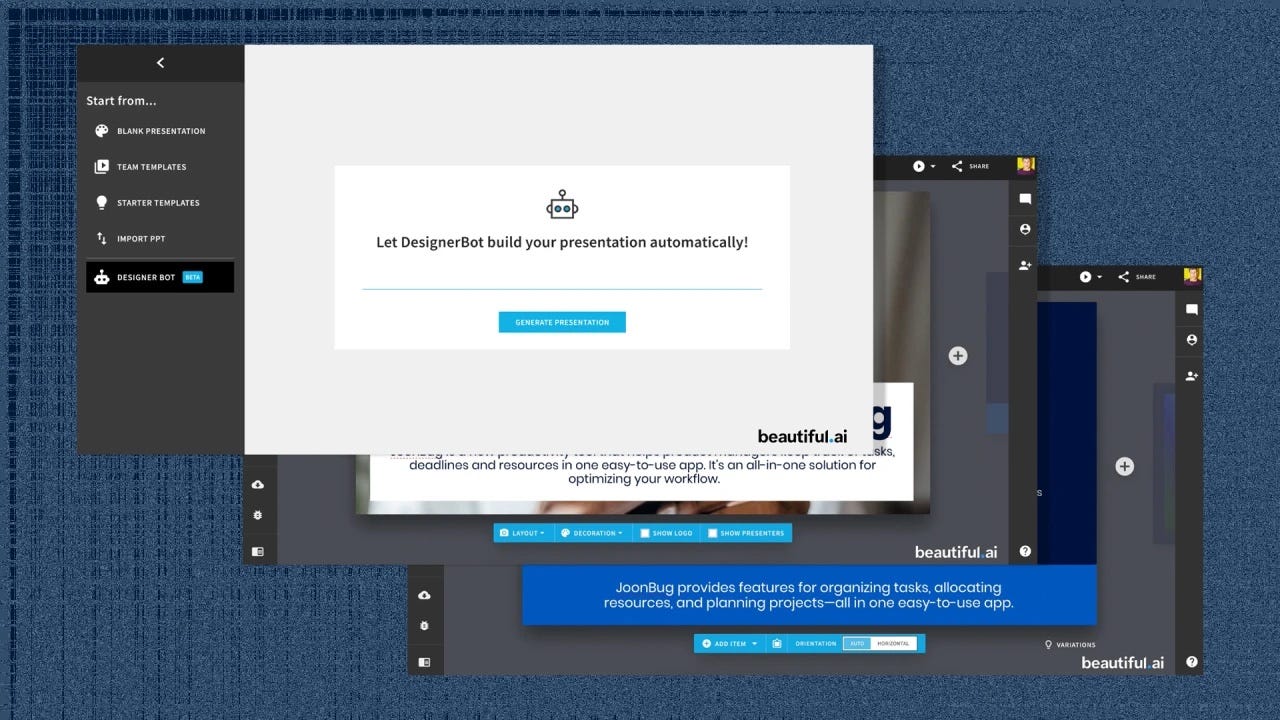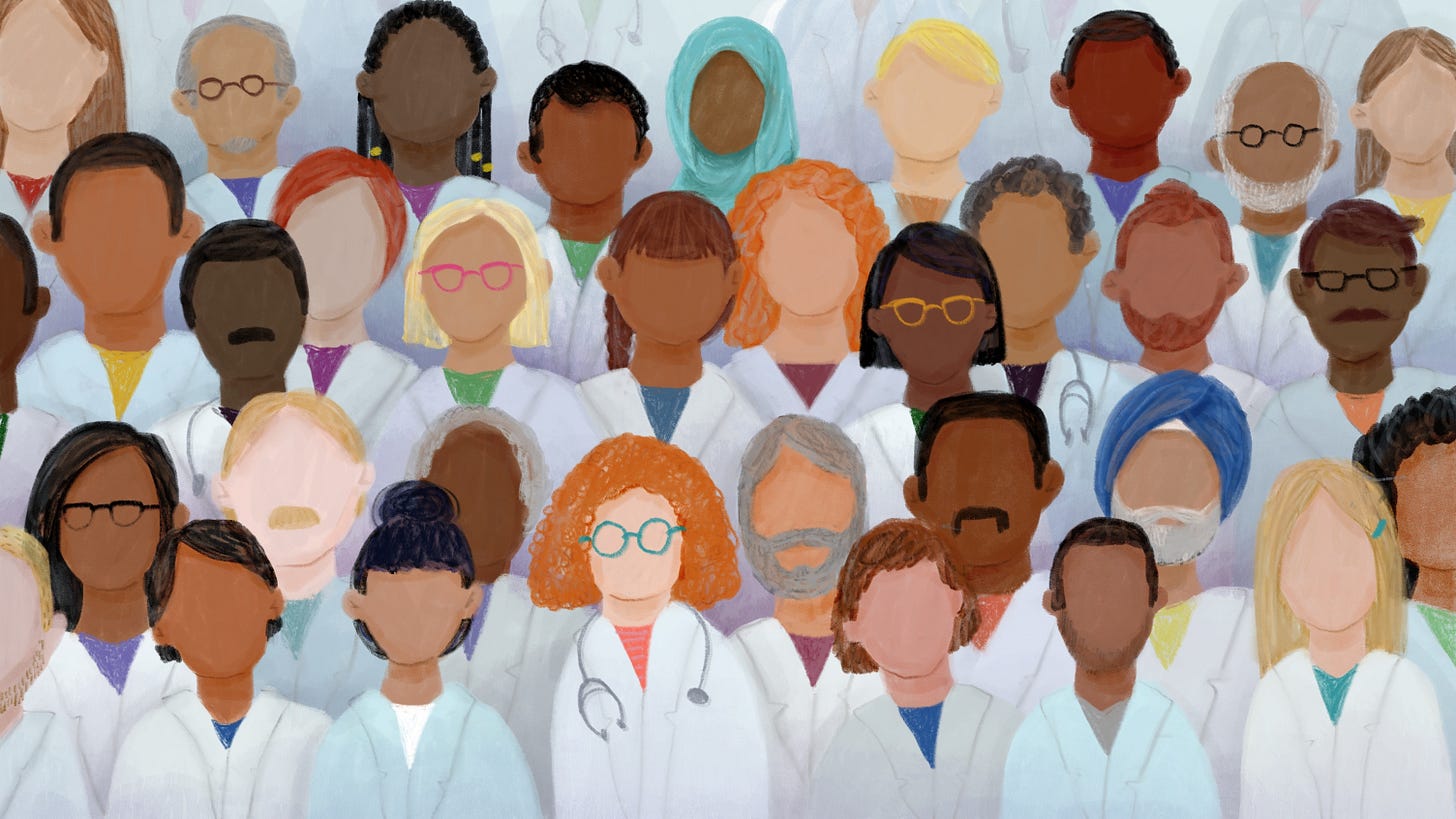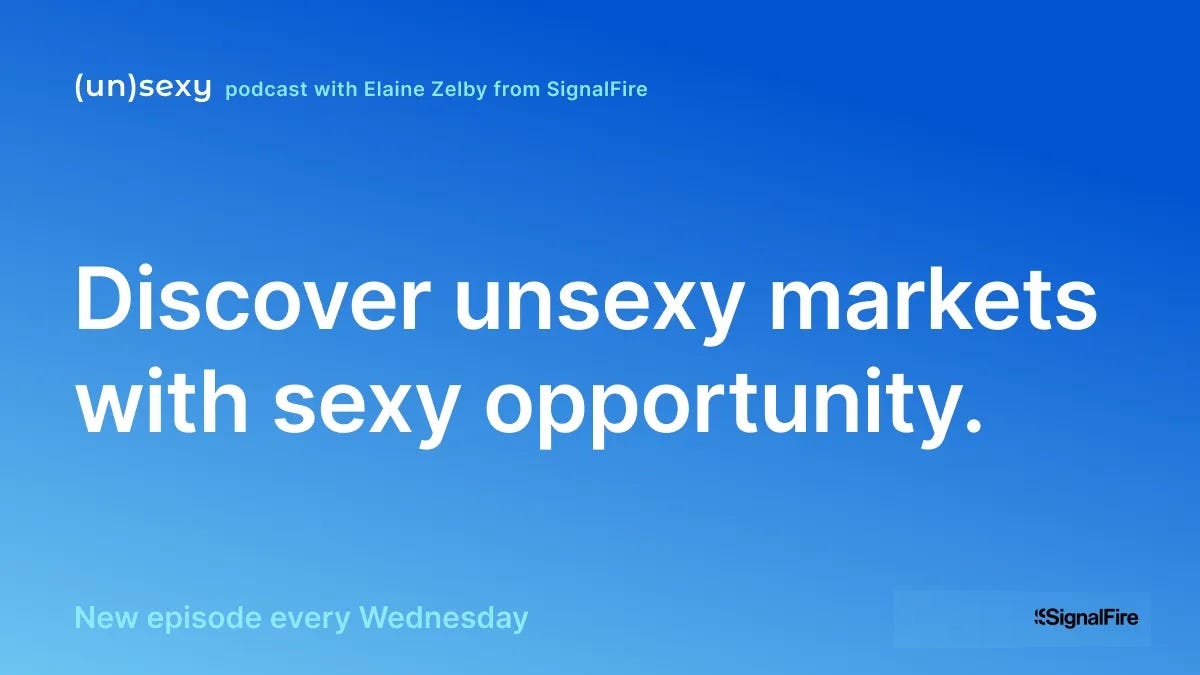3 Things: NLP Slide Generator, AI Cheerleader, Visa/Credentialing for Foreign Health Workers
Happy Sunday and a very warm welcome to all the new subscribers! I’m thrilled and honored to have you as readers and truly appreciate your thoughts and feedback 🙏. Each edition of 3 Things will contain a dive into 3 rabbit holes I’ve found myself going down recently and associated business opportunities. Subscribe to get each week’s edition straight to your inbox and if you enjoy it, please share (I suck at self-promotion so can use your help)! This past week I’ve been thinking a lot about:
NLP Slide Generator
AI Cheerleader
Visa/Credentialing for Foreign Healthcare Workers
1. NLP Slide Generator
While Amazon might have killed the Powerpoint presentation internally, most of the business world still runs in large part on slide decks. Whether it’s internal strategy presentations, sales decks, investor pitches, or consulting work, much of knowledge work gets communicated via digital presentation. Over the past few years, there have been many new deck generation companies funded, like Pitch which raised ~$50m pre-product and then another $85m in 2021 from Lakestar and Tiger, and Tome which has raised $75m in the past 2 years from the likes of Greylock, Coatue, and Lightspeed. It’s about time as there hasn’t been many competitors to Powerpoint or Google Presentations that have gained significant traction (though companies like Prezi have tried). Many of these companies position themselves as “AI deck generators” which sounds cool but so far I haven’t been blown away.
In reality, for most situations it doesn’t really make sense to type in a single prompt and get an entire presentation. The output is pretty poor and requires so much editing that the benefits are diminished. Additionally, it will propose similar things for similar types of presentations which means everything will revert to the mean and become generic. Often you know what you’re looking to achieve on each slide but might not know how to style or structure the content. You might want suggestions of how to phrase the contents or how to show a chart or metric. Often, you’re customizing or updating a deck as opposed to creating something from scratch. Also, you want it to follow your brand guidelines, not some preset templates. I think a winning solution in this category would involve ingesting a company’s brand and style guide (colors, logos, fonts, imagery) and intended audience, and having very simple natural language input boxes where you provide info on the purpose of the particular slide and links to any copy, data/chart/spreadsheet, or graphics that should be included. From there it would generate a few versions of beautiful, on-brand, compelling slides and you could select which you want to use. The overhead for creating entire presentations would be minimal and the output would be way better.
2. AI Cheerleader
A few years ago, I heard about an app called WeCroak that tries to bring people happiness by reminding them of their mortality. The app was inspired by a Bhutanese folk saying, “to be a happy person, one must contemplate death five times daily”. Bhutan is one of the happiest countries in the world and measures their prosperity on a Gross National Happiness (GNH) Index instead of the traditional GDP scale, so probably a place we should listen to when it comes to finding happiness. WeCroak sends 5 push notifications a day at random, inconsistent times (just like death which is unpredictable) that each contain a quote about death from a famous thinker or author. The idea is to provide times in your day where you can be reminded to focus on the things that matter and let go of the things that don’t.
In our always-on, hyper-connected, social media filled world, it’s so easy to get caught up in feelings of inadequacy or overwhelm. A company could build a similar app that pushes a notification multiple times a day at random intervals that offers words of encouragement or other positive affirmations. Imagine being stressed out by work or life and getting a notification on your phone that offered a quote like “Courage starts with showing up and letting ourselves be seen — Brene Brown” or “Am I good enough? Yes I am — Michelle Obama”. Everyone responds to different types of positive (or negative) reinforcement so you could provide input into what style you want the notifications - humorous, stoic, aggressive, gentle, etc. and the app will send you personalized messages at varying times each day. Just having short, subtle reminders that you’re ok could help ground you and put you in a different state of mind.
3. Visa/Credentialing for Foreign Health Worker
We’ve discussed this many times before in this newsletter, but the current and impending healthcare labor shortage is alarming. We are getting older, sicker, and healthcare workers are getting burned out. Another area where we’ve experienced labor shortages and historically filled them with foreign labor is in the agricultural sector. In the 1600s, farm labor in the US was done primarily by indentured servants from England. When that proved to be insufficient, we began bringing in slaves, mostly from African countries. After the Civil War, a lot of farm labor was brought in from Asia, and by the 1930s, the vast majority of farm workers were coming from Mexico. During WWII the US actually introduced something called the Bracero Program which allowed Mexicans to work on farms without needing visas, though this was ended in the 1960s. Today, the majority of agriculture work is still done by people from Central America through the H-2A visa process.
Since the process of getting these visas and managing logistics for workers is cumbersome and complex, a tech company called Seso has built software and services to make the process of dealing with H-2A visas a breeze. For foreign trained doctors and nurses, they still have stringent visa, education, certification, and licensure requirements to practice medicine in the US. A similar company could recruit healthcare workers in countries with a surplus and help streamline the process of getting them the required visas, completing the necessary education requirements and language proficiency tests, obtaining the licenses and certifications, and ultimately matching them with a hospital or health system in need. You could start with nursing and other medical fields with lower requirements like mental health and slowly start adding in other in-demand specialities. Given the additional education requirements, it could makes sense to create your own Foreign Educated Nurses course and partner with Observership and Residency programs for doctors to help accelerate the process. At the end of the day, this is a tech-enabled services company but with so many massive tailwinds that I believe this could be a large business.
That’s all for today! If you have thoughts, comments, or want to get in touch, find me on Twitter at @ezelby and if you enjoyed this, please subscribe and share with a friend or two!
~ Elaine
And in case you like podcasts…
From scrap metal to timber, estate planning to freight pooling, the new (un)sexy podcast is a meandering exploration of just how sexy unsexy industries can be.
Join us weekly as we uncover stories of niche and esoteric markets, understanding their history and looking at the future through the eyes of the pioneering entrepreneurs willing to bring technology and exponential improvements to these often overlooked spaces.
Listen now on Spotify, Apple, Google, or wherever you listen to podcasts.




